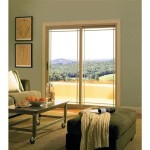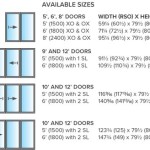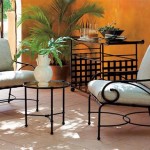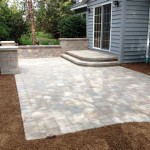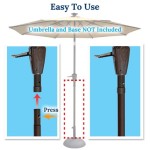Artificial Turf Over Concrete Patio: A Comprehensive Guide
The integration of artificial turf over concrete patios has become an increasingly popular landscaping trend. This method offers an efficient and aesthetic solution for transforming dull, hard surfaces into inviting, green spaces. This article provides a comprehensive overview of the benefits, installation process, maintenance requirements, and considerations associated with installing artificial turf on concrete patios.
Concrete patios, while durable and low-maintenance in their original state, can often lack the visual appeal and comfort desired for outdoor living areas. They can become extremely hot in direct sunlight, offer no cushioning, and may develop cracks and stains over time. Artificial turf provides an alternative surface that addresses these drawbacks while still utilizing the existing concrete structure. By understanding the intricacies of this installation process, homeowners can create a more aesthetically pleasing and functional outdoor space.
Benefits of Artificial Turf on Concrete Patios
Installing artificial turf on a concrete patio presents several advantages over traditional concrete surfaces. These benefits range from aesthetic improvements to functional enhancements that can significantly improve the usability and enjoyment of the patio space.
Firstly, artificial turf offers a significant aesthetic upgrade. Concrete, by its nature, is a utilitarian material. Covering it with artificial turf immediately injects color and texture into the space, creating a more visually appealing environment. This is especially beneficial for patios that have become stained, cracked, or otherwise unsightly over time. The consistent green color of artificial turf provides a refreshing contrast to the stark gray of concrete, making the area feel more inviting and relaxing. Furthermore, artificial turf is available in various shades and textures, allowing homeowners to customize the look of their patio to match their personal preferences and overall landscape design.
Secondly, artificial turf improves the comfort and usability of the patio. Concrete surfaces can become extremely hot during the summer months, rendering them uncomfortable to walk or sit on. Artificial turf, especially when combined with a proper underlayment, provides a cooler and more comfortable surface. The synthetic fibers of the turf absorb less heat than concrete, and the underlayment acts as a thermal barrier. This makes the patio more usable during hot weather and more pleasant for activities such as sunbathing, dining, or simply relaxing outdoors. In addition, the cushioning provided by the turf and underlayment can make the patio a safer and more comfortable space for children and pets to play.
Thirdly, artificial turf can enhance the value of a property. A well-maintained patio is a desirable amenity for potential homebuyers. By upgrading a concrete patio with artificial turf, homeowners can increase the visual appeal and functionality of their outdoor space, making their property more attractive to prospective buyers. The long lifespan and low maintenance requirements of artificial turf also contribute to its long-term value. While the initial investment may be higher than simply leaving the concrete patio as is, the long-term benefits in terms of aesthetics, comfort, and property value can make it a worthwhile investment.
Finally, artificial turf offers a low-maintenance alternative to natural grass. Maintaining a natural lawn requires regular watering, mowing, fertilizing, and weed control. Artificial turf eliminates these tasks, freeing up time and resources for homeowners. While artificial turf does require some maintenance, such as occasional brushing and rinsing, it is significantly less demanding than maintaining a natural lawn. This makes it an ideal option for homeowners who want a beautiful, green outdoor space without the hassle of constant upkeep.
Installation Process: Preparing the Concrete Surface and Installing the Turf
The installation of artificial turf over concrete patios requires careful preparation and precise execution to ensure a long-lasting and aesthetically pleasing result. The process involves several key steps, starting with preparing the concrete surface and culminating in securing the turf properly.
The first step is thoroughly cleaning the concrete surface. This involves removing any dirt, debris, leaves, or other contaminants that could interfere with the adhesion of the turf. A pressure washer is often the most effective tool for this task, but a stiff brush and garden hose can also be used. It is crucial to ensure that the concrete is completely clean and dry before proceeding to the next step. Any existing cracks or imperfections in the concrete should be addressed at this stage. Small cracks can be filled with concrete patching compound, while larger cracks may require professional repair. Addressing these imperfections will help to ensure a smooth and stable surface for the artificial turf.
The second step involves installing an optional underlayment. While not always necessary, an underlayment can provide several benefits, including increased cushioning, improved drainage, and enhanced thermal insulation. Underlayment materials are typically made from recycled rubber or foam and are available in various thicknesses. The choice of underlayment will depend on the desired level of cushioning and drainage. The underlayment should be cut to fit the dimensions of the patio and secured to the concrete using construction adhesive or double-sided tape. This step is crucial for ensuring that the turf is installed on a smooth, even surface.
The third step is cutting the artificial turf to size. This requires precise measurements and careful cutting to ensure a seamless fit. It is recommended to use a sharp utility knife or a specialized turf cutter to avoid damaging the turf fibers. When cutting the turf, it is important to leave a slight overlap around the edges, which can be trimmed later for a perfect fit. Pay close attention to the direction of the turf fibers when cutting and installing multiple pieces, as this will affect the overall appearance of the finished product. The turf should be laid out on the patio and allowed to settle for a few hours before being secured to the concrete.
The fourth step is securing the artificial turf to the concrete. This can be done using various methods, including construction adhesive, double-sided tape, or mechanical fasteners. Construction adhesive is a strong and durable option that provides a permanent bond between the turf and the concrete. Double-sided tape is a less permanent option that allows for easier removal of the turf if necessary. Mechanical fasteners, such as nails or screws, can also be used, but they require drilling into the concrete, which can be more time-consuming. The choice of method will depend on the desired level of permanence and the type of concrete surface. Apply the adhesive or tape according to the manufacturer's instructions, ensuring that the turf is firmly pressed down onto the concrete. If using adhesive, allow it to cure completely before using the patio.
The final step is trimming the edges and finishing the installation. Use a sharp utility knife to trim the excess turf around the edges of the patio, creating a clean and professional-looking finish. Inspect the entire surface for any imperfections or loose areas and address them as needed. Brush the turf fibers to ensure that they are standing upright and evenly distributed. Finally, add any desired decorative elements, such as planters, furniture, or lighting, to complete the transformation of the concrete patio into a welcoming outdoor space.
Maintenance and Longevity of Artificial Turf on Concrete
While artificial turf offers a low-maintenance alternative to natural grass, some level of care is still required to ensure its longevity and maintain its aesthetic appeal. Properly maintaining artificial turf on concrete involves regular cleaning, occasional brushing, and addressing any potential issues promptly.
Regular cleaning is essential for removing dirt, debris, and other contaminants that can accumulate on the surface of the turf. The frequency of cleaning will depend on the usage of the patio and the surrounding environment. In general, it is recommended to rinse the turf with a garden hose at least once a month to remove loose debris. For more stubborn stains or spills, a mild detergent and warm water can be used. Avoid using harsh chemicals or abrasive cleaners, as these can damage the turf fibers. A leaf blower can also be used to remove leaves and other lightweight debris from the surface of the turf. Promptly addressing spills and stains will help to prevent them from setting and becoming more difficult to remove.
Occasional brushing is necessary to maintain the upright position of the turf fibers. Over time, the fibers can become matted down, especially in high-traffic areas. Brushing the turf with a stiff-bristled brush will help to restore its original appearance and prevent the fibers from becoming permanently flattened. The frequency of brushing will depend on the usage of the patio, but it is generally recommended to brush the turf at least once a month. When brushing the turf, be sure to brush in the opposite direction of the fibers to lift them up and separate them.
Addressing potential issues promptly is crucial for preventing long-term damage to the artificial turf. This includes repairing any tears or holes in the turf, addressing any drainage problems, and controlling weeds or moss that may grow around the edges of the patio. Small tears or holes can often be repaired with patching kits specifically designed for artificial turf. Drainage problems can be addressed by ensuring that the underlying concrete surface is properly sloped and that the drainage system is functioning correctly. Weeds or moss can be controlled with herbicides or manual removal. Regularly inspecting the turf for any signs of damage or problems will help to ensure that it remains in good condition for many years.
The lifespan of artificial turf on concrete can vary depending on the quality of the turf, the installation method, and the level of maintenance. However, with proper care, artificial turf can last for 15 years or more. Factors that can affect the lifespan of the turf include exposure to sunlight, heavy traffic, and extreme weather conditions. Choosing a high-quality turf that is designed to withstand these factors will help to ensure its longevity. Properly installing the turf and providing regular maintenance will also contribute to its long-term durability. By following these guidelines, homeowners can enjoy the benefits of artificial turf on their concrete patios for many years to come.

How To Install Artificial Grass On Concrete A Step By Guide

How To Install Artificial Grass On Concrete

How To Install Artificial Grass On Concrete A Step By Guide

How To Install Artificial Grass On Concrete A Step By Guide

How To Install Artificial Grass In Huddersfield On Concrete Super

Can Artificial Grass Be Successfully Installed On Concrete Cls Scotland

How To Lay Artificial Turf On Concrete Pavers

How And Why To Lay Artificial Grass On Concrete Tips

Diy How To Lay Artificial Turf With Concrete Pavers Part 2

Fitting Artificial Grass To Concrete Patio Or Hard Surfaces Direct

